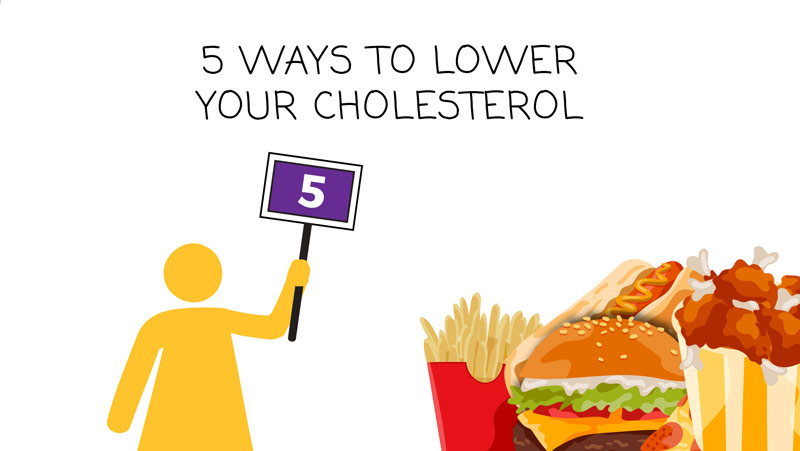Even though you might feel healthy, you can still have high cholesterol – and a simple test will reveal this. At first, the diagnosis can be daunting, as people with high levels of cholesterol are at an increased risk of certain health problems, including heart disease and stroke. Fortunately, you can keep your LDL-C or ‘bad cholesterol’ levels under control by making a few simple changes and sticking to them, for life (1).
- Eat heart-healthy foods
Cholesterol is produced naturally by your body, giving you just the amount needed to function properly. But it can also be found in some of the foods we eat, such as those high in saturated fats. These include red meat, full-fat dairy, eggs and oils. To keep cholesterol at the recommended level – less than 200 mg/dl (milligrams per decilitre of blood) – you should aim to reduce these foods and include more unsalted nuts, seeds, vegetables and unsaturated fats (2).
- Keep your weight in a healthy range
As well as thinking about the quality of your food; you also need to think about the quantity. You can find out if you weigh more than is recommended for a person of your size by working out your BMI. This is easily done by dividing your weight in kilograms by the square of your height in metres. A healthy body weight is defined as a BMI of less than 25.
- Increase your everyday activity
It can sometimes be hard to fit exercise into your everyday life, especially if you have a desk job. But even increasing your activity by a small amount can help to keep your cholesterol at an acceptable level. Evidence shows that adults benefit from 30 minutes of daily activity on most days of the week and 60 minutes for children. Think about ways you can introduce more exercise, whether it’s increasing the distance you walk, how often you get to the gym, or extending the length of each activity (3).
- Avoid stroke, don’t smoke
It’s no secret that smoking has been linked to all sorts of cardiovascular problems, including heart disease and stroke. Cigarette smoke also raises your levels of ‘bad cholesterol’ and lowers your ‘good cholesterol’, which you need to prevent your arteries from clogging up. Put simply, to avoid stroke, don’t smoke (4).
- Take medication
Lifestyle changes can go a long way in reducing your cholesterol levels, but you may need extra medication to reach your target. Many people are prescribed statins, which can reduce the risk of heart attack and stroke. But for some, the side effects of these drugs outweigh the benefits, and you may be prescribed an alternative (1).
Sometimes, the LDL-cholesterol stays high, and an additional drug is needed, such as an injectable prescription medicine called a PCSK9 inhibitor. This helps the liver clear the LDL from your blood and works together with statins to keep the ‘bad’ cholesterol low (5). Always discuss your treatment with your doctor and find the best plan that works for you.
References
- Daniel G. Hackam, Robert A. Hegele. Cholesterol lowering and prevention of stroke. Originally published 3 Jan 2019. https://doi.org/10.1161/STROKEAHA.118.023167. Stroke 2019, 50 and 537-541.
- https://www.stroke.org.uk/what-is-stroke/are-you-at-risk-of-stroke/high-cholesterol.
- https://www.medicalnewstoday.com/articles/does-exercise-lower-cholesterol. Does exercise lower cholesterol? Medically reviewed by Daniel Bubnis, M.S., NASM-CPT, NASE Level II-CSS, Fitness. Written by Adam Rowden. March 24, 2021.
- https://www.webmd.com/heart-disease/quit-smoking-helps-heart. How you can help your heart if you quit smoking. Medically reviewed by James Beckerman, MD, FACC on May 07, 2021.
- Robert S Rosenson, MD, Christopher P Cannon, MD. Patient education: High cholesterol and lipid treatment options (Beyond basics). July 19, 2021.
Updated February 2022
Next review 2024















